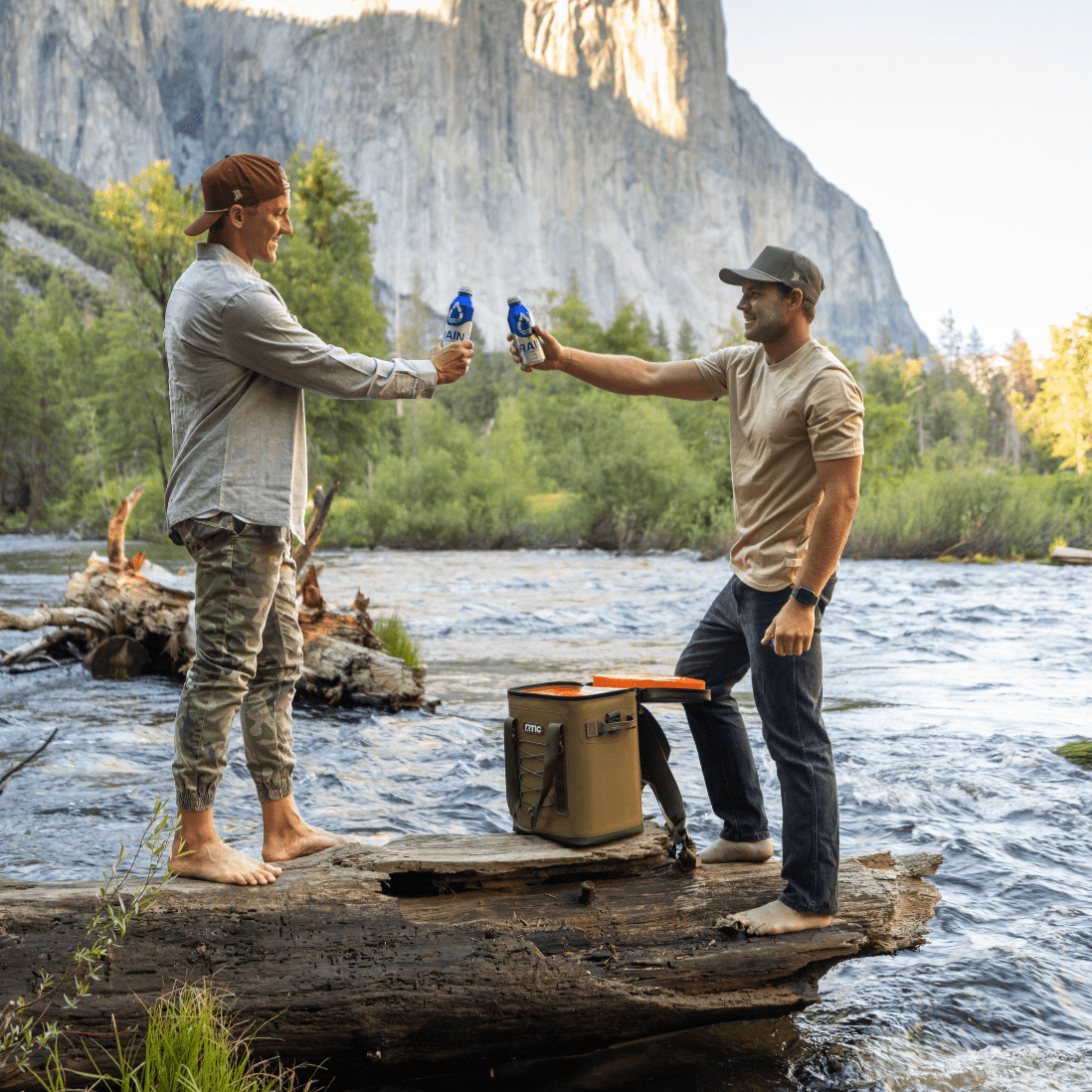

· By Dillon Griffin
Environmentally Friendly Bottled Water: What’s Better Than Plastic?
Environmentally Friendly Bottled Water: What’s Better Than Plastic?
We’ve all been there - on a trip on a hot summer day (maybe the beach, maybe golfing, maybe the lake) and you reach for a nice, cold bottle of water. Bottled water has become a necessity with the on-the-go lifestyles we all lead - it’s easy, it’s versatile, and there isn’t always an option available to refill a reusable bottle. Traditional plastic bottled water filled this gap for many years, however our dependence on plastic has caused a massive environmental impact that will have longstanding effects. Regardless of placing a plastic bottle in a recycle bin or not, the chances of that bottle actually being recycled are pretty slim. It’ll likely end up in a landfill, or on the off chance it is recycled, can only be downcycled. When making your decision, you may want to consider an environmentally friendly bottled water such as an aluminum option to avoid adding to the plastic problem we’ve created.
Traditional plastic bottled water creates a few larger scale issues that surpass consumers making the initial choice. A typical plastic bottle of water takes significantly longer to cool down when placed inside a refrigerator or cooler with ice - a significant burden on the environment with excess power usage. Plastic bottles also degrade over time if they are not stored properly (think about when you’ve left a plastic bottle of water in your car and drank a sip afterwards - tasted different, right?). The U.S. recycling rate for plastic is currently 5%-6% with the majority of plastics ending up in the landfill, creating a massive amount of plastic waste that is growing every day. The primary packaging for plastic bottled water (the bottle) is essentially waste once the water has been consumed and the secondary packaging (most likely a shrink film) holding the case together is also waste that will end up in a landfill rather than back in circulation. Plastic waste fills our landfills and has a trickle down effect on the surrounding environment such as local waterways, lakes, and oceans.
There are some awesome environmentally friendly bottled water options on the market today - of these, the most realistically recycled option would be in an aluminum bottle. Aluminum packaging is infinitely recyclable and aluminum is recycled most often because aluminum has inherent value. RAIN Pure Mountain Spring Water is a great aluminum bottled water option on the market, aiming to combat the plastic problem we’ve created. The water’s source is equally as important as the packaging - purified water is essentially distilled and remineralized tap water and municipal sources are actually tap water. Natural springs can be found in many places, where the underground aquifer pushes water to the surface to relieve pressure. Spring water is filtered naturally by the layers of sediment and rock on the way down and captures natural minerals (sodium, calcium, magnesium, etc) on its journey, which gives spring water its flavor profile. There are several companies that bottle natural spring water, but oversiphon the spring - creating a trickle down effect on their local environment. A sustainable spring source is key to your choice for a sustainable bottled water - yes, the packaging may be more sustainable, but not if the company bottling the product is impacting their local agriculture with oversiphoning. RAIN bottles in one of the rainiest counties in the U.S. with over 65 inches of annual rainfall. RAIN’s spring source is constantly being replenished, which makes it ultra-sustainable.
RAIN Pure Mountain Spring Water is an authentically sustainable bottled water option - the spring source, the aluminum bottles, and the secondary packaging are all examples of small things we can do to limit our impact on the environment. As consumers, we can make the choice to purchase environmentally friendly products when an option is available - the one plastic bottle that you leave on shelf by choosing an aluminum option may not seem like a large impact, however as more consumers make the same choice we’ll combat the plastic problem one bottle at a time!
